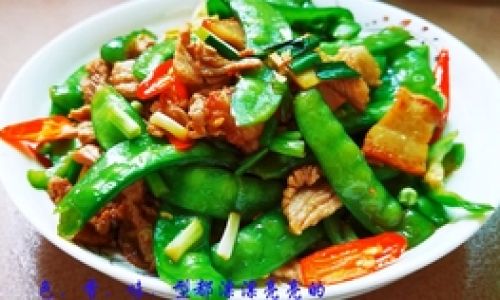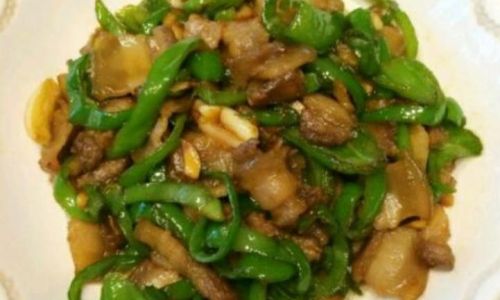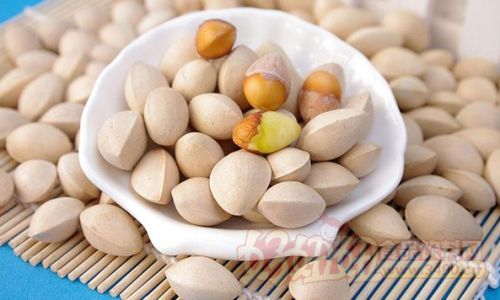Table of content
Stir-frying, a cornerstone of home-style cooking, transforms simple ingredients into flavorful meals with minimal effort. This technique, rooted in Chinese culinary traditions, has become a global favorite for its speed, versatility, and ability to preserve nutrients. Whether you’re a novice cook or a seasoned home chef, mastering the basics of stir-frying opens the door to endless meal possibilities. In this guide, we’ll explore the fundamentals of stir-frying, essential ingredients, and a collection of timeless recipes that will elevate your weeknight dinners.
The Essence of Stir-Frying
Stir-frying involves cooking ingredients over high heat in a shallow pan or wok, tossing them rapidly to ensure even cooking. The method sears foods quickly, locking in moisture and textures while caramelizing natural sugars for depth of flavor. Unlike slow-cooking techniques, stir-frying retains the vibrant colors and crispness of vegetables, making it a healthy choice for busy lifestyles.
Key to success is preparation—commonly known as mise en place in professional kitchens. Chop vegetables uniformly, marinate proteins, and organize sauces before igniting the stove. A well-heated wok and a steady hand are your best allies in achieving that coveted wok hei, the smoky aroma imparted by high-temperature cooking.

Essential Tools and Ingredients
- Wok or Skillet: A carbon-steel wok is ideal for even heat distribution, but a large stainless-steel or cast-iron skillet works well too.
- Spatula: A long-handled metal spatula allows precise flipping and scraping.
- High-Smoke-Point Oil: Peanut, vegetable, or avocado oil withstands high temperatures without burning.
- Aromatics: Garlic, ginger, scallions, and chili peppers form the flavor base of many dishes.
- Proteins: Chicken, beef, pork, shrimp, or tofu—cut into bite-sized pieces for quick cooking.
- Vegetables: Bell peppers, broccoli, carrots, snap peas, and mushrooms add color and crunch.
- Sauces: Soy sauce, oyster sauce, hoisin sauce, and rice vinegar balance saltiness, sweetness, and acidity.
Technique Tips for Perfect Stir-Fries
- Heat Control: Preheat the wok until it’s smoking hot before adding oil. This prevents sticking and ensures a rapid sear.
- Order of Addition: Start with aromatics, followed by proteins, then hearty vegetables, and delicate greens last.
- Toss, Don’t Stir: Use a gentle lifting motion to coat ingredients evenly without bruising delicate items.
- Sauce Timing: Add liquids toward the end to avoid steaming and to thicken sauces properly.
Classic Stir-Fry Recipes
Kung Pao Chicken (Spicy Garlic Chicken)
A fiery favorite blending tender chicken, peanuts, and dried chilies.
Ingredients:
- 1 lb boneless chicken thighs, cubed
- 2 tbsp soy sauce
- 1 tbsp rice wine
- 1 tbsp cornstarch
- 3 tbsp vegetable oil
- 6 dried red chilies
- 1 tbsp Sichuan peppercorns
- 4 garlic cloves, minced
- 1-inch ginger, grated
- 1 bell pepper, diced
- ½ cup roasted peanuts
- 2 scallions, sliced
Sauce: - 2 tbsp soy sauce
- 1 tbsp black vinegar
- 1 tbsp hoisin sauce
- 1 tsp sugar
- 1 tsp sesame oil
Instructions:
- Marinate chicken in soy sauce, rice wine, and cornstarch for 15 minutes.
- Heat oil in a wok. Stir-fry chilies and peppercorns until fragrant. Add chicken and sear until golden.
- Toss in garlic, ginger, and bell pepper. Stir-fry 2 minutes.
- Pour in sauce and peanuts. Toss until sauce thickens. Garnish with scallions.
Garlic Sautéed Bok Choy
A crisp, nutrient-packed side dish.
Ingredients:

- 2 bunches baby bok choy
- 3 garlic cloves, sliced
- 1 tbsp oyster sauce
- 1 tsp sesame oil
- 1 tbsp vegetable oil
Instructions:
- Separate bok choy leaves. Rinse thoroughly.
- Heat oil in a wok. Sauté garlic until golden.
- Add bok choy stems first, then leaves. Stir-fry 2–3 minutes until wilted.
- Drizzle oyster sauce and sesame oil. Toss gently. Serve immediately.
Beef with Broccoli
Tender beef and crisp broccoli in a savory sauce.
Ingredients:
- 1 lb flank steak, thinly sliced
- 1 tbsp soy sauce
- 1 tbsp cornstarch
- 2 tbsp vegetable oil
- 1 head broccoli, cut into florets
- 1 onion, sliced
- 3 garlic cloves, minced
Sauce: - ¼ cup beef broth
- 2 tbsp soy sauce
- 1 tbsp brown sugar
- 1 tbsp oyster sauce
- 1 tsp sesame oil
Instructions:

- Marinate beef in soy sauce and cornstarch for 10 minutes.
- Blanch broccoli in boiling water for 2 minutes; drain.
- Heat oil in a wok. Stir-fry beef until browned. Remove.
- Sauté onion and garlic until soft. Add broccoli and sauce. Simmer 2 minutes.
- Return beef to the wok. Toss until coated. Serve over rice.
Mapo Tofu (Spicy Tofu with Minced Pork)
A silky, numbing-spicy Sichuan classic.
Ingredients:
- 14 oz soft tofu, cubed
- ½ lb ground pork
- 2 tbsp doubanjiang (fermented chili bean paste)
- 1 tbsp fermented black beans
- 3 garlic cloves, minced
- 1-inch ginger, grated
- 1 tbsp Sichuan peppercorns, toasted and ground
- 1 tbsp cornstarch dissolved in ¼ cup water
- 1 tbsp vegetable oil
- 2 scallions, chopped
Instructions:
- Heat oil in a wok. Sauté pork until crispy. Add doubanjiang, black beans, garlic, and ginger. Fry until fragrant.
- Gently stir in tofu. Pour in cornstarch slurry. Simmer 5 minutes.
- Sprinkle Sichuan pepper and scallions. Serve with steamed rice.
Egg Fried Rice
A versatile base for leftovers or standalone meal.
Ingredients:

- 3 cups cooked jasmine rice, chilled
- 3 eggs, beaten
- ½ cup frozen peas and carrots
- 2 tbsp vegetable oil
- 2 garlic cloves, minced
- 1 tbsp soy sauce
- 1 tsp sesame oil
- Salt and pepper to taste
Instructions:
- Heat 1 tbsp oil in a wok. Scramble eggs until set. Remove.
- Add remaining oil. Sauté garlic until golden. Toss in peas and carrots.
- Add rice, breaking up clumps. Stir-fry 3 minutes.
- Fold in eggs, soy sauce, and sesame oil. Season and serve.
Common Mistakes to Avoid
- Overcrowding the Pan: Cook in batches to prevent steaming.
- Underseasoning: Taste and adjust sauces as you go.
- Overcooking Vegetables: Add delicate greens last to retain crunch.
- Skipping Marination: Even 10 minutes tenderizes meat and boosts flavor.
Customizing Your Stir-Fries
Stir-frying thrives on creativity. Swap proteins, experiment with vegetables, or adjust spice levels to suit your palate. For vegan options, use tofu or tempeh and vegetable-based oyster sauce. Gluten-free? Substitute soy sauce with tamari.
Conclusion
Stir-frying is more than a cooking method—it’s a gateway to crafting wholesome, restaurant-quality meals at home. With practice, you’ll learn to balance flavors, textures, and aromas effortlessly. So grab your wok, sharpen your knife, and let the sizzle of the pan guide you toward culinary mastery. Whether it’s a quick weeknight dinner or a feast for guests, these stir-fried classics will never disappoint. Happy cooking!







0 comments